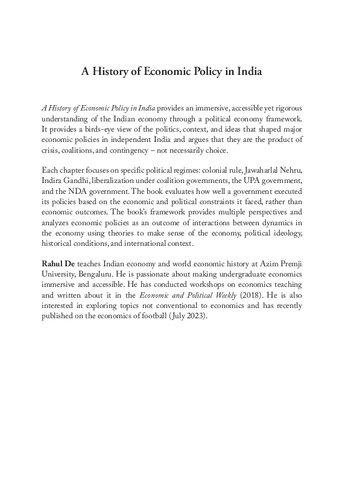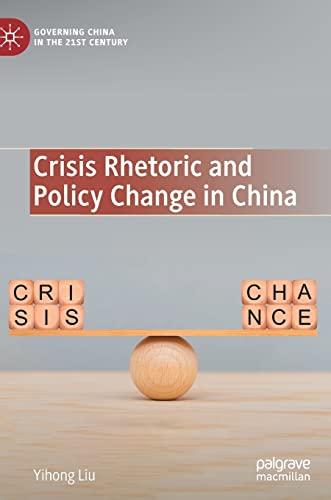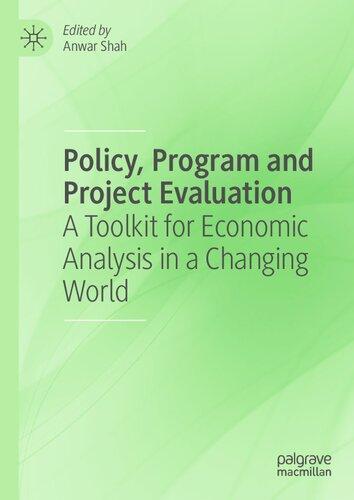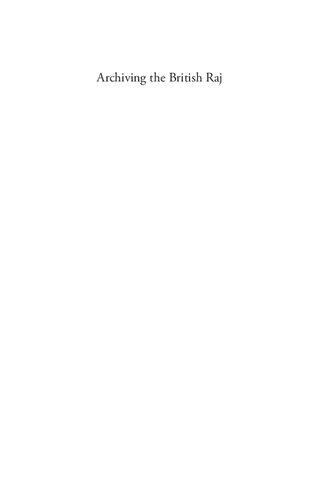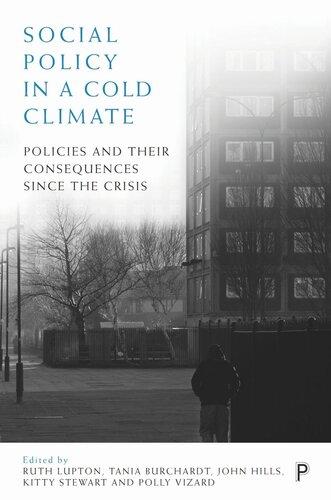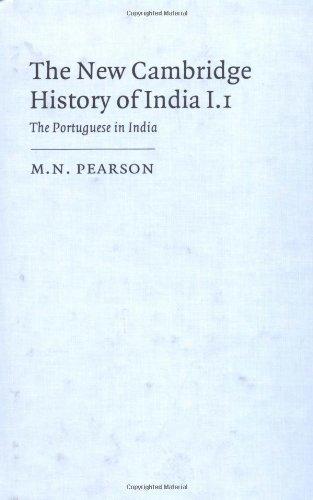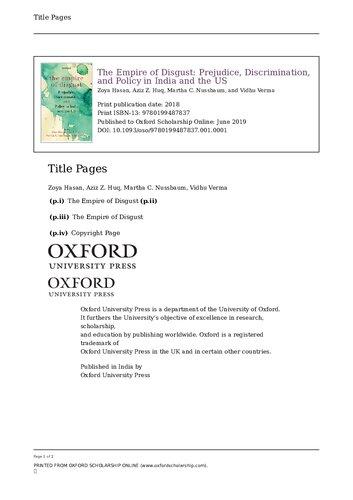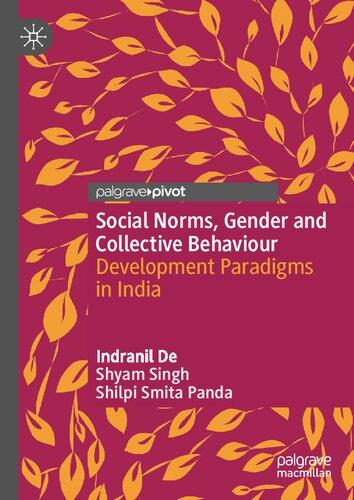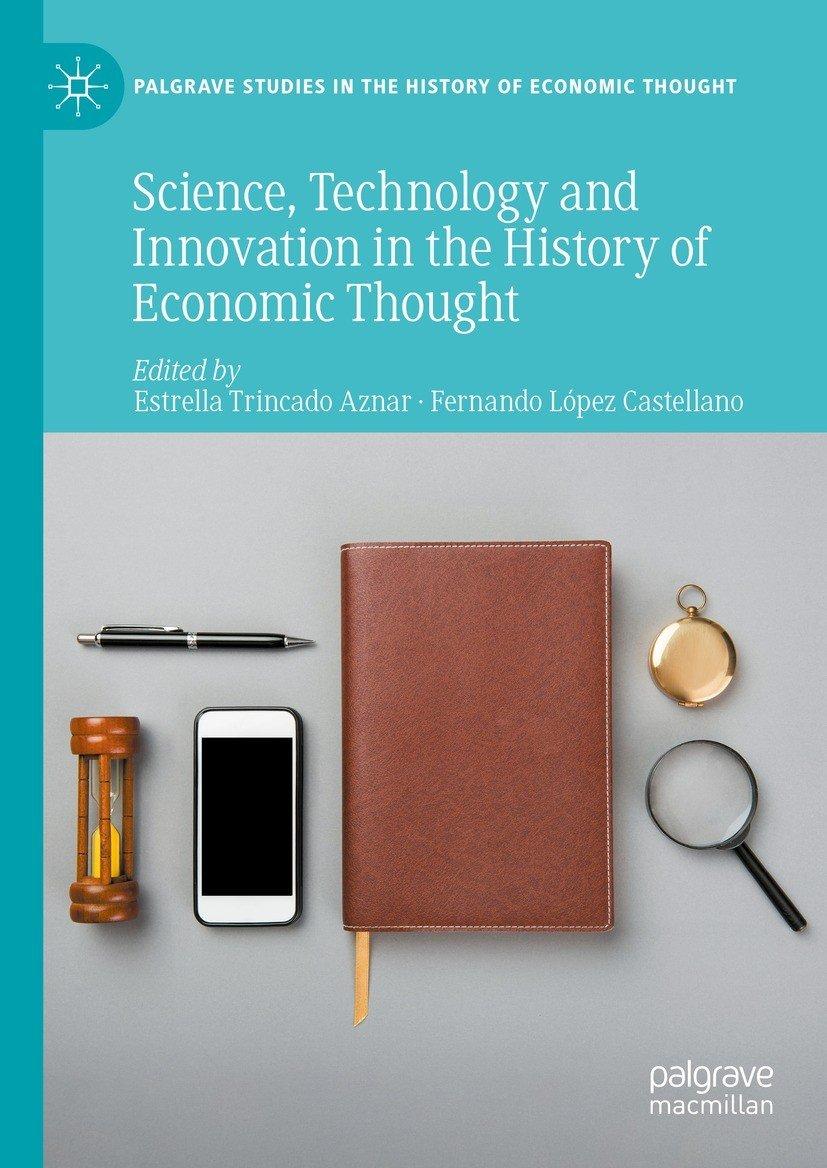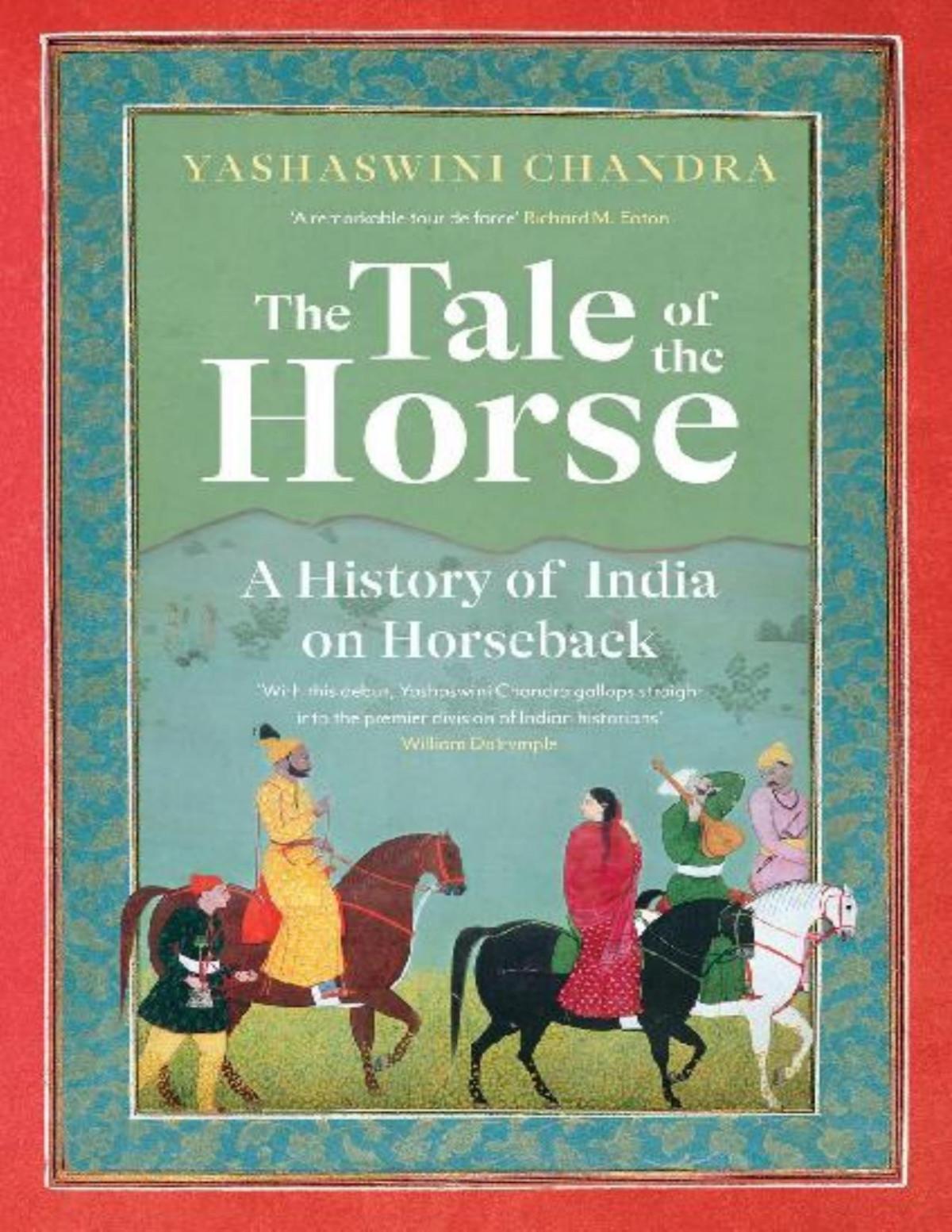A
History of Economic Policy in India Crisis, Coalitions, and Contingency
Rahul De
Shaftesbury Road, Cambridge CB2 8EA, United Kingdom
One Liberty Plaza, 20th Floor, New York, NY 10006, USA
477 Williamstown Road, Port Melbourne, VIC 3207, Australia
314–321, 3rd Floor, Plot No. 3, Splendor Forum, Jasola District Centre, New Delhi – 110025, India
103 Penang Road, #05–06/07, Visioncrest Commercial, Singapore 238467
Cambridge University Press is part of Cambridge University Press & Assessment, a department of the University of Cambridge.
We share the University’s mission to contribute to society through the pursuit of education, learning and research at the highest international levels of excellence.
www.cambridge.org
Information on this title: www.cambridge.org/9781009362672
© Rahul De 2023
This publication is in copyright. Subject to statutory exception and to the provisions of relevant collective licensing agreements, no reproduction of any part may take place without the written permission of Cambridge University Press & Assessment.
First published 2023
Printed in India
A catalogue record for this publication is available from the British Library
ISBN 978-1-009-36267-2 Hardback
ISBN 978-1-009-36268-9 Paperback
Cambridge University Press & Assessment has no responsibility for the persistence or accuracy of URLs for external or third-party internet websites referred to in this publication, and does not guarantee that any content on such websites is, or will remain, accurate or appropriate.
Figures and Tables
Figures
2.1 Trends in investment (percent) from 1950 to 1967
2.2 BOP from 1950 to 1966 (rupees, crores)
3.1 BOP from 1967 to 1980 (rupees, crores)
3.2 Trends in investment in proportion (percent) from 1967 to 1980 81
3.3 Trends in components of revenue expenditure from 1970 to 1992 (rupees, crores) 92
3.4 Trends in fiscal deficit as a proportion of GDP from 1970–71 to 2008–09 93
4.1 Trends in investment in proportion (percent) from 1980 to 2007 108
4.2 Trends in BOP from 1980 to 2003 (rupees, crores) 109
4.3 Trends in revenue expenditure from 1980 to 2011 (rupees, crores) 113
Tables
2.1 Period-wise growth rate: GDP and aggregate demand (percent)
2.2 Period-wise growth rate: sectoral (percent)
2.3 Trends in inequality: Gini coefficient based on monthly per capita expenditure 60
Preface
This book was born out of more than a decade of research on understanding the contours of, and teaching a course on, the Indian economy for the last six years –more pertinently, a response to multiple discussions about the contemporary economy with people from a wide range of occupations from social activists, construction workers, shopkeepers, taxi drivers, and journalists; chance encounters with people in the upper management of multinational corporations; and the comments sections of discussions on Indian economic policy on social media. My interactions bore out two general observations: first, people are interested in understanding how the economy affects their lives – irrespective of the kind of work they do – and second, there is a serious dearth of accessible resources on the Indian economy.
In this book, I present an accessible history of economic policies in India from colonial to contemporary India. This book is meant to serve as a representative sample of important academic literature on the Indian economy organized thematically. It aims to provide a socio-historical narrative to explain economic policies in contemporary India. This work will be of particular value to readers who do not have a background in economics and might not have the time or inclination to read multiple works to understand a particular period or policy in Indian history. It can also serve as a complementary resource to a teacher as it provides a coherent and accessible narrative connecting different periods and different data sources, public documents, and academic literature that can be brought to the classroom.
I have been part of designing the economics curriculum at Azim Premji University (APU), Bengaluru. I believe that undergraduate economics education in India, especially in teaching economic theory, is abstract and focused on modelling and quantitative analysis; students are not well exposed to different trajectories of analysis within economics and complementary concepts provided by other disciplines like history, politics, and sociology. Other economics educators who I have interacted with have felt the same.* At APU, the economics curriculum has attempted to embed the historical, political, social, and intellectual
* R. De and A. Thomas, “Rethinking Undergraduate Economics Education,” Economic and Political Weekly 53, no. 3 (2018): 21–24.
x
Preface
within economic courses. The emphasis is on understanding theories within the context in which it was shaped. I start our Introduction to Economics class with the Industrial Revolution and explain how colonial intervention born out of the need for industrialization shaped the global capitalist economy. Further ahead in the course we study cases of market failures through examples of oil spillage, deforestation of rainforests, and a discussion on how capitalism has shaped global climate change. The need to contextualize economics within history and social structure was an important intervention for me as a teacher. The Indian economy course that I teach emphasizes contextualizing economic policies and events in India as being shaped by global dynamics. One point on which my views may differ from other commentators on the history of the Indian economy is the focus on embedding it within a global history of capitalism through colonialism, interactions with international agencies, through economic dynamics of the global economy, or indirectly through political and economic ideas from the Western, developed world – often brought in by Indian economists and policymakers trained in the United Kingdom and the United States of America.
There is no way to cover more than 200 years of history in one book without making tough choices. I have generalized both for time periods and have also had to sacrifice many regionally specific issues and themes in India. This is particularly true for the first chapter on economic policies in colonial India. The mandate of the chapter is to explain primarily how the economic problems faced by independent India were created by colonial economic policy and secondly how the choice of policies by Jawaharlal Nehru was influenced by events in the global economy in the 20th century. Since this book is directed towards readers who may not have been exposed to the academic literature on the Indian economy, this chapter covers a long period for the sake of narrative continuity. Readers can refer to the bibliography for detailed and scholarly works on policy in colonial India.
Even though this is a historical book, I have not explicitly engaged with the question of histography: how different accounts of the Indian economy serve different political agendas. To add another conceptual layer of how writing history itself is a form of politics would make this book too abstract for the reader.
I have written the book from a Marxian political economy framework, which I have explained in more detail in the Introduction, and this means that I have used Marxian concepts such as accumulation, class, and crisis to understand the trajectory of the Indian economy. I have embedded the narrative on the development of the Indian economy within the dynamics of global capitalism. However, politically I have been agnostic – as far as possible – as I believe that my political stance should not affect the analysis I am presenting to the reader, and I hope that readers from across the political spectrum will read this book.
Acknowledgments
Thanks to all my students batch of 2015–2020 who were the test audience for this manuscript. Your joys and pains in class and response to the course motivated me to write this book.
Thanks to my colleagues at Azim Premji University for having a shared sense of purpose about the importance of teaching and openness to engage with ideas from other disciplines.
Thanks to Arjun Jayadev for his encouragement and belief that I could finish this manuscript.
Thanks to the faculty of the economics group at APU for the formal and informal discussion about all things economics and providing insights into society through WhatsApp memes and Twitter beefs.
Thanks to Vaishnavi Pandalai, who assisted me with my research. Our weekly conversations and your enthusiasm regarding budgets and five-year plans were the fuel that drove my writing process.
Thanks to Alex Thomas for all our discussions on writing, teaching and not following the straight path in research.
Thanks to Vamsi Vakulabharanam, my PhD dissertation supervisor, with whom I took the first baby steps to understand the Indian economy using the frame of crisis and conceptualized the periodization for this book.
Thanks to Azim Premji University for providing research funding and a conducive environment for writing.
Thanks to the staff of the Teen Murthy Library who assisted me in accessing archival material.
Thanks to Saswata Guha for our collaborative analysis on macro-economic data in India and open-ended discussions on all things economics.
Thanks to Reetika Khera for providing new insights into the policymaking process under the United Progressive Alliance (UPA) government.
Acknowledgments
Thanks to all my teachers over the year for inspiring.
Thanks to Pratham, Jean Drèze, CORD India, and Vidaranya School for providing opportunities to gain meaningful insights about India.
Thanks to Rohit De for his guidance and mentoring regarding writing: Your feedback on my research proposal was invaluable. Your book was an inspiration for me.
Thanks to Anwesha Rana, the editor of this manuscript, for guiding me through the whole process of ideating to finishing the full manuscript.
Thanks to the staff of Cambridge University Press who assisted with producing the final draft of this book.
Thanks to Neeraja Sundaram: your interest in understanding political economy provided me with a window into the minds of how non-economists access economics.
Thanks to Ma and Baba for supporting me through every endeavor.
Thanks to Amma, Patti, and Charu for warmly welcoming us whenever we came over.
Abbreviations
AICC All-India Congress Committee
APC Agricultural Price Commission
APMC Agricultural Produce Marketing Committee
ASER Annual Status of Education Report
ASI Annual Survey of Industry
BJP Bharatiya Janata Party
BOE Bank of England
BOP balance of payment
CEGC Central Employment Guarantee Council
CMP Common Minimum Program
CPI Communist Party of India
CWC Congress Working Committee
DBT direct beneficiary transfer
DMK Dravida Munetra Kazhagam
EGOM Empowered Group of Ministers
EIC East India Company
FCI Food Corporation of India
FDI foreign direct investment
FERA Foreign Exchange Regulation Act
FICCI Federation of Indian Chamber of Commerce and Industry
FRA Forest Rights Act
FRBM Fiscal Responsibility and Budget Management
FYP Five-Year Plan
GDP gross domestic product
GFCE government final consumption expenditure
GFD gross fiscal deficit
GST Goods and Service Tax
HYV high-yielding variety
IAAP Intensive Agricultural Area Program
IADP Intensive Agricultural Development Program
Abbreviations
ICDS Integrated Child Development Scheme
IIP Index of Industrial Production
IMF International Monetary Fund
INC Indian National Congress
LARR Land Acquisition and Rehabilitation and Resettlement
MKSS Mazdoor Kisan Shakti Sangathan
MRTP Monopolistic and Restrictive Trade Practices
MSP minimum support price
NAC National Advisory Council
NAS New Agricultural Strategy
NCEUS National Commission for Enterprise in the Unorganised Sector
NCPRI National Campaign for People’s Right to Information
NDA National Democratic Alliance
NFSA National Food Security Act
NGO non-governmental organization
NREGA National Rural Employment Guarantee Act
NSSO National Sample Survey Office
OBC Other Backward Caste
PC Planning Commission
PDS public distribution system
PIL public interest litigation
PL 480 Public Law 480
PM-JAY Pradhan Mantri Jan Aarogya Yojana
PPP public–private partnership
R&D research and development
RBI Reserve Bank of India
RTI Right to Information
SC Scheduled Caste
SEZ Special Economic Zone
SEZA Special Economic Zone Act
TDP Telegu Desam Party
UIDAI Unique Identification Authority of India
UK United Kingdom
UPA United Progressive Alliance
USA United States of America
USSR Union of Soviet Socialist Republics
WW1 World War 1
WW2 World War 2
Introduction
I was a child of reforms: I grew up in the 1990s and remember the constant delight of experiencing new things. My earliest memory of liberalization was the incursion of private cable television in Indian households in 1991 and getting access to international programming: sports, cartoons, and movies available at any time. I still have foggy memories of the 1980s when all of India would be sitting in front of the TV on Sunday mornings to watch Ramayan and Mahabharat – the previous generations were not entitled to a choice in entertainment. Choice and desire were a constant theme growing up. The personal computer arrived in households in the mid-1990s; I learned how to manipulate the keyboard and mouse to a higher degree of wizardry than any computer programmer could at that time. Then, in 1999, I visited the first multi-storey music store in Delhi: Planet M, where one could actually purchase original international albums in the same year they were released; no more illegal downloads from the internet or sneaky forays into the back alley of Pallika Bazaar – a haven of piracy located in the underbelly of central Delhi. The internet had seeped into Indian consciousness by now, and half of the country’s city youth had discovered a new way of making friends and finding love hidden from the eyes of our parents. I visited my first mall in Delhi in 2002, something that I had heard about from friends who had made foreign trips. I still remember the thrill of just walking around in a shiny, air-conditioned building filled with the biggest brands that I could recognize – Nike, Adidas, McDonald’s, Crossword, Music World, Barista, and pubs. Last but not least came affordable cell phones, and before we knew it we had forgotten how people met in the times before cell phones, we had forgotten the endless arguments with our parents about using the phone all the time, and we survived many hours of boring class trying to create a new record on Snake. New things and choices were unheard of a generation ago, especially for the large part of the upper class who were dependent on a fixed income. I was constantly reminded by elders that life was very different before, they
A History of Economic Policy in India
had to wait for years to get any kind of consumer durables – phone lines, cars, scooters, fridge. Things were used until they broke down, and even then Scotch tape and home repairs could salvage devices for a couple of years more. The only choice for most consumer goods were either you could afford it or you could not; most people learned to make a moral value out of saving and curbing desire before liberalization in 1991 – or that is what I believed.
After school, I decided to pursue economics partly because it was the safest option for those of us who had decided to avoid the rat race of a professional degree: engineering, medical, architecture, or law school, but was also partly inspired to study something that had an impact on “everyday life.” I had a paper in Indian economy in my third year of college at Delhi University; the course was quite comprehensive. However, on the first day of class we were told to focus on the exam and use previous year’s test papers, assignments, and notes by senior students to prepare for the paper. The Indian economy was perceived as a boring subject not eliciting the interest of any students or the teacher, the readings were long and filled with jargon, and the lecture was filled with information and detail; most students left the class happy to have seen the back of it and hoping to never have to return to it again.
As I pursued a Master’s in Economics, I learned that liberal reforms were not beneficial to most Indians and that the agricultural sector had stagnated since the 1990s, leading to widespread immiseration of peasants and farmer suicides on a scale that bordered on genocide. Class and regional inequality increased like never before, and I was part of a small privileged class who had immediately benefitted from liberal reforms. I was shocked to come to terms with the fact that all my influences – friends, families, teachers, newspapers, and television – had failed to register or communicate this. How had we insulated ourselves from such a stark reality, how had we built a bubble so thick that we believed the media but not the economic reality in our backyard? Visit any construction site, and I guarantee you that you will not doubt the claim that reforms did not benefit most Indians.
In order to make sense of liberal reforms, I pursued a PhD in Economics and went about researching: why were liberal reforms perceived as an economic success and how did it get political backing in a country where the majority did not benefit from them? As I researched economic policy, data, and the discourse on reforms, I learned that very little popular knowledge about policies is true, that policymaking is immensely complicated, and that the media has little interest or benefit in reporting about the economic reality of the nation, that most people have no access to information and little energy to go looking for it. But I also discovered that the youth, especially
those who face the tangible effects of policy in their day-to-day lives, have a strong passion to understand and intervene in the world around them. This trajectory informed my endeavor to write an accessible history of the Indian economy, one that does not require specialized economic knowledge, one that does not bore students or anyone interested in knowing more, one that makes the economy relatable to all and inspires them to engage with policy in their household, in their neighborhood, in their schools and offices, in their villages, and on social media.
In this book, I present an accessible history of economic policies in India, from the colonial to contemporary periods, as I have found that there is a dearth of accessible and comprehensive histories of economic policies and the Indian economy. There are some gems on economic policy which are specific to a certain period; there are multiple books that analyze the contemporary Indian economy. However, there is an emphasis on writing about the liberalization period and generalizing about the period before. There also exist multiple accounts by policymakers about economic policy and the Indian economy. Lastly, there exists extensive academic work on specific policies, sectors, macroeconomic variables, and economic institutions. This project is not a substitute for the extensive literature on the Indian economy. It aims to provide an accessible introduction for non-economics readers and economic students on the history of economic policy in India and inspire them to read in more depth. I aim to reach those who on a whim want to learn more about economic policy, and I hope to make them feel more connected and curious about economic policy and the Indian economy.
It is an impossible task for one person or one work to summarize and provide a coherent narrative to understand a long period; therefore I have made decisions about what to include and what not to based on certain principles and mandates that I set out on in this project. It was important for me to have a narrative connecting different periods that the Indian economy went through, both to give a sense of continuity and to emphasize that history has a strong bearing on the contemporary. An important mandate for this project was to engage a generation that does not view reading in the same way as the youth did 20 years ago. I frequently lecture my students about the importance of reading history only for them to show me how much information can be learned through a well-made 10-minute video on YouTube. I do not believe this is an indictment of written histories but evidence that young people in general and informed readers in India are interested in different perspectives on economic policy. However, this has to be presented in a relatable and accessible way. Keeping this in mind I wanted this book to be readable like
A History of Economic Policy in India
a novel from chapter to chapter, but I also wanted to break out from writing norms and habits I find common in writing on economic policy: writing from a position of academic seriousness and objectivity, cold and distant tone, focus on data speaking for itself, and using numbers and economic concepts to obfuscate and confuse rather than clarify, politically biased or provocative for the sake of eyeballs. If nothing else, this has driven away readers from engaging with the Indian economy and made it into a sphere of interest for professional economists.
I believe that this project is an important contribution to the contemporary intellectual space in India, especially as it is increasingly driven by social media which rewards simplification, generalization, and controversy and tends to drive people into echo chambers: we tend to follow those who we agree with. Two particular aspects of the nature of discussion on social media bother me – first, how important themes and questions are framed as either you are for it or against it and, second, how easy it is to find spaces to get approval for one’s view, leading to what is referred to as confirmation bias. I hope this book will provide nuance, context, and perspectives but most importantly will inspire the curiosity of the reader to aim to be informed, balanced, and articulate in an environment that rewards being banal or controversial.
This book provides a history of economic policies and foregrounds policies oriented towards questions of growth and welfare: policies influencing gross domestic product (GDP), agricultural production, industrial production, and redistribution. I focus on these policies because these are the most fundamental issues that anyone should be informed about, these are policies that have a tangible impact on the daily lives of millions of people. Further, this provides a heuristic device to discuss other policies meant to complement major policies such as foreign trade policies, monetary policy, and fiscal policies. For example, to evaluate import substitution policies under Jawaharlal Nehru’s government, one has to address how this contributed to industrial policy.
To provide a structure to the narrative in this project, I have broken the Indian economy into different periods: the choice of a period has been founded around political stability or the idea that we can glean a particular vision or philosophy of development within a stable political regime – a politically stable government can gain support for policies that fit in with their larger vision. Further, each of the periods is divided by an economic or political crisis. While standard economic theory frames a crisis as an economic problem that has to be solved by policy intervention, my theoretical framework assumes that a crisis is an organic culmination of instabilities within the economy. A crisis might present itself through a particular sector or economic process.
However, it is indicative of broader structural imbalances within the balance of policies. Moreover, a crisis creates conditions for political and policy changes as these are volatile times, and voters and politicians are more amenable to sudden changes. This logic, of course, cannot be homogeneously applied across all periods, therefore I modify this logic for some periods. However, in all cases the periodization has been created to support the needs of the narrative, not some objective framework for periodization. The following is a summary of each period and the reasons behind it.
The Colonial Economy – 1776–1947
This chapter will summarize the nature of colonialism and how the colonial relationship between India and Britain changed from the 19th to the 20th century. One key insight in this chapter is how the two world wars and the Great Depression of 1929 shaped the world economy and consequently India. I will analyze how these changes shaped the freedom struggle in India. This chapter will conclude by describing the conditions faced by India on the eve of independence. This chapter will not be a comprehensive survey of colonialism in India but will focus on how certain colonial policies shaped the constraints faced by the Indian economy. The year 1947 is a period of political and economic crisis and provides conditions for changing policies.
The Drive to Industrialize under Nehru’s Leadership – 1950–66
This chapter will discuss the main economic policies of the Nehruvian government: planning, mixed economy, heavy industry driving the growth process, and import substitution policies. Nehru was the prime minister throughout this period, and I discuss how policies were consistent with a larger development vision. I will evaluate the policy options that Nehru had and why he chose these specific policies. I will explain the impact of these policies on the Indian economy and the external conditions which influenced the implementation of these policies. This period ended with Nehru’s death and the food crisis of 1965–66 which highlight the lack of policies to address the issues in the agricultural sector in India. The crisis and leadership vacuum created the conditions for a policy change.
The Turn to Populism under Indira Gandhi – 1967–79
This chapter will discuss the first tenure of Indira Gandhi’s prime ministership and analyze the changes she made to Nehru’s policies – which tapered towards
A History of Economic Policy in India
socialist and populist policies. I will argue that these changes were a response to shifting power within the Indian National Congress (INC) and the government responding to the economic consequences of Nehruvian policy, which led to increasing political consciousness amongst the masses. I will study how Indira’s policies affected the economy and led to social unsettlement and strikes, culminating in the Emergency period. This chapter will conclude with Indira losing power and India facing the Organization of the Petroleum Exporting Countries (OPEC) oil price crisis and industrial stagnation in 1979, leading to a crisis in the dynamics of a regime.
The Early Liberalization Years – 1980–2003
This chapter will discuss the period in which India transitioned from a mixed, inward-oriented, planning-based economy to a liberalized, external-oriented, market-based economy. In a shift from other academic literature, I will argue that liberalization began in the 1980s and was a fairly long period of transition. The beneficial effect of liberalization, especially in driving growth, exports, and investment, was experienced only after 2003. This chapter will be framed around the following questions: the conditions which led to the introduction of liberalization policies, why liberal reforms were politicized in 1991, and why liberal reforms did not have much of an impact on the manufacturing sector or the export sector in the 1990s. The year 2003 is not a crisis year in itself but marks the end of a period of economic and political uncertainty; the periods following this saw politically stable governments and reforms translating into higher growth.
Maturity of Reforms in the UPA Years – 2004–13
This chapter will focus on the two tenures of the United Progressive Alliance (UPA) government. I will analyze why the Indian economy was able to achieve high growth after more than two decades of liberal reforms, and how the UPA government used a different process to introduce “reforms with a human face” to make them more politically palatable. I will also discuss a change in philosophy within welfare policies referred to as the rights-based socially redistributive policies like the Mahatma Gandhi National Rural Employment Guarantee Act (MGNREGA), the Right to Education, and the Right to Information (RTI). This chapter will evaluate why the UPA government was able to achieve high growth – unlike the INC and the Bharatiya Janata Party (BJP) governments in the previous regime.
Reforms under NDA – 2014–19
This chapter will focus on the first tenure of the National Democratic Alliance (NDA) government. I will analyze how the BJP gained an electoral majority for the first time in Indian history and examine major economic policies introduced by the NDA, such as demonetization, Goods and Services Tax, and Farm Bill. I will analyze how reforms under the NDA were different from those under the UPA. At the time of writing, the economy was under the tenure of the second NDA government and going through the COVID-19 lockdown crisis. I have decided not to include this period in this manuscript as it was difficult to comprehend the impact of lockdown on the Indian economy and how these would influence policies in the future.
Why is historically researched and politically neutral discourse on economic policy needed? Well, it is largely because there is no way to be completely informed or objective when understanding and evaluating economic policy; the more nuance one can get about a policy, the more balanced one’s understanding of a policy becomes; and the more detail one has about the historical trajectory of a policy, the better one can answer the question of why this and why now. An important lesson that I try to imbibe in my students is that there is no objective evaluation of a policy because every policy has someone who benefits and someone who does not, and evaluation is colored by one’s own biases. Therefore, one has to understand the logic and reasoning that shapes a policy instead of limiting oneself to evaluating the benefits and criticisms of the policy.
I ask my students to ask five basic questions about assessing a policy: (a) why was this policy introduced? (b) what was the problem that it was meant to fix or, broadly, how did historical context frame this particular problem and create this policy? (c) what were the politics which shaped this choice of policy or how did the logic of politics and institutions shape this policy? (d) what were the alternative policies available or what were the other theories available to solve this particular problem, and (e) how was this policy perceived or what do empirical data and reception tell us about this policy? In answering these questions, readers need to imagine themselves in those times: historical consciousness, the ability to imagine a decision from the perspective of those who are making it, is an important weapon in the historian’s toolkit. In one of my first classes in the Indian economy course, I ask students to imagine that they are part of the Planning Commission under Nehru and reflect on what would be the primary problem that economic policy should address on the eve of independence. Initially, students struggle
A History of Economic Policy in India
with this question and project the problems that still exist today onto that period – they say poverty and basic needs: water, sanitation, housing, clean drinking water, lack of infrastructure, corruption, and so on, are the major problem that needs to be addressed. At this point, I remind them to reflect on the nature of colonial economic policy and how it affected the structure of the Indian economy. This provides a starting point to think about the problems faced at the time of independence. One of the ways I prepare students to be historically conscious is to read documents from that period: popular documents such as Nehru’s and Gandhi’s speeches on economic issues and policy, budget documents, or other public documents like parliamentary debates, Congress Working Committee reports, and newspaper reports. Even accessing literature or cinema from that period apprises one of the issues that were considered important then, especially for the common man. These are some thinking exercises through which I hope to build historical consciousness amongst the reader through this book.
This book applies a political economy framework that borrows from both of its Marxist and liberal traditions. Political economy provides an innovative theoretical framework to study historical questions through the lens of multiple disciplines. Political economy as conceptualized by the first generation of European economists – Adam Smith, David Ricardo, Thomas Malthus, John Stuart Mill, and Karl Marx, amongst many others – was an object of study: it referred to the study of the emerging political–economic system which affected every aspect of the human experience. It was one of the earliest articulations of capitalism, but the original thinkers did not separate the economic, social, and political consequences of economic activity. Over the 20th century, the economy was analyzed as being independent of social and political dynamics. This empowered economists to analyze economic policy through an objective lens as they did not have to address moral questions regarding justice, equality, and environmental sustainability. Political economy in the 20th century transformed into one particular method of studying economic policy which foregrounds analysis of how politics affect economic outcomes. In the spirit of political economy inquiry, especially the form inherited from 19th-century economists, I presume that economic reality – economic policies and their tangible effect on people – is determined by political, social, economic, cultural, and intellectual factors; this means that there cannot be one causal explanation for any policy or economic outcome. For example, to understand why Nehru after independence adopted the planningbased heavy industry-oriented development model, one has to understand the challenges or problems Nehru was trying to address, the popular ideas at the
time, the history of this institution or idea in colonial India, and how the social composition and political system in India shaped this change.
The political economy framework has been used by different commentators on the Indian economy differently; the following are some of the theoretical principles that I have followed. A political economy framework provides space for explaining a change in economic policy through multiple levels of abstraction and not one causal explanation, such as the ideas or theories shaping this policy, how political contestation has shaped the form of a policy, and how implementation challenges have affected the execution of the policy. For example, the Farm Bill Act introduced by the NDA in 2018 can be understood through ideas: the pros and cons of liberalizing the agriculture sector, the politics of the NDA government, and the process of implementing through political institutions in India. Second, the framework assumes that history has no design or goal, and therefore every moment, outcome, and policy is a culmination of multiple processes and also the beginning of the next set of processes. I do not assume that the present is a culmination of the events of the past nor do I evaluate whether a history of policies can be considered progressive or stagnant. For example, to analyze and evaluate liberalization in 1991, one has to study reforms introduced before 1991 and also how liberal reform policies have been modified or changed after 2003; reforms cannot be understood at just one point. Third, the political economy framework assumes that different classes have different economic and political interests, and consequently every policy has winners and losers. This leads to different perspectives and responses to policy. However, classes are not necessarily homogenous or conscious of their interest, which is why we find both coalitions between classes that do not share an interest or lack of consciousness amongst a class about their common interest. As a consequence, political parties play an important role in articulating class demand and contesting policy. Two examples stand out from my narrative: first, the lack of an organized national agricultural lobby at the time of independence led to the dilution of public investment in agriculture under Nehru. This changed over the 1970s and 1980s as agricultural powerful lobbies got political representation. In the 1990s and early 2000s, civil society organizations played a key role in articulating the demands of the landless and tribals and reshaping social rights policy under the UPA government. While data provides a window into understanding the impact of a policy, interesting insights into the policymaking process can be gleaned by paying attention to the discourse around it: the final form of a policy is influenced by its reception; a critical understanding of the government’s and national media’s presentation of a policy adds another layer of nuance, which is not captured through
A History of Economic Policy in India
data, by demonstrating what determines the popularity of a policy. This is particularly true for populist policies, such as socialist policies introduced by Indira Gandhi or demonetization by the NDA government which had little impact on the economy. Economic theory and development discourse have generalized that the state is homogenous and has a conscious and coherent developmental philosophy. I do not assume through this political economy framework that the arms of the state are homogenous in identity or unified in interest. Instead, I describe how political infighting between central and state governments, within the central government and the opposition, between the bureaucratic arms of the state, and even within the ruling party shape policy outcomes. Second, periodization plays a foundational role in political economy analysis. While evaluating policy within a period, I analyze how the timing, sequence, and form of a policy is influenced by the development philosophy in a period. For example, how did a social rights policy such as the MNREGA fit within the UPA’s brand of reforms?
I have consciously ignored or given lesser attention to some important caveats of economic policy analyses. Given the breadth of regional, social, and political diversity in India, it is impossible to analyze a policy from regional perspectives. Therefore, I focus my analysis on presenting the logic of a policy from the perspective of the central government; in some sense the central government is the central protagonist of this novel. There are some components of policymaking, which are central in most analyses of economic policy, such as the role of monetary policy and the Reserve Bank of India (RBI), how fiscal sustainability constraints decisions, the role of macroeconomic variables such as inflation, the balance of payment (BOP), interest rate, and so on, in shaping policy decisions. These have been peripherally mentioned and underrepresented in the analysis in this manuscript. The primary reason for this is that explaining the role of these themes requires conceptual grammar which can alienate readers without formal training in economics – I believe that a reader can understand a policy without understanding some of the theoretical underpinnings of the policy. Lastly, identity in the form of caste, region, and gender has become an important part of social science analysis in India in the 21st century. I have focused more on class as a category for understanding the impact of policies on social groups; this is primarily because there exist good data and secondary literature analyzing class in India. Caste is an important axis through which economic inequalities are reproduced, and there is a dearth of databases and empirical studies to elucidate this mechanism – this is an important area for scholars to contribute to. I have tried to identify, wherever possible, the impact of policies on excluding marginalized castes as well as
how the rise of vernacular regional parties has brought certain backward castes into the national policy discussion. However, there is an urgent need for a more detailed analysis of how economic policy shape and reproduce caste inequities. The title of this book is motivated by the political economy approach to understanding history. The subtitle “A Story of Crisis, Coalitions, and Contingency” emphasizes that history is connected to the past and future, that human actors cannot plan and control the outcome of developmental plans, and that there is no design to history. As we study the history of the Indian economy, one finds ample evidence that decisions have been shaped by factors outside the control of the decision-makers. A corollary to this idea is that one cannot generalize that economic policies have unanimously been progressive or stagnant or improved or harmed people’s lives. Instead, a rigorous evaluation of a policy should first ask why, why now, and for whom?
Before ending, I will provide one interesting question from each period covered in this book in the hope that it would motivate the reader to read more about the period. In Chapter 1, I analyze how the independence movement in India was shaped by colonial economic policies. In Chapter 2, I discuss why Nehru decided to have a planning-based mixed economy instead of a marketbased private-sector-driven economy. In Chapter 3, I evaluate whether Indira Gandhi’s policies can be considered populist or socialist. In Chapter 4, I argue that 1991 was not the year of liberalization in India. In Chapter 5, I address why the UPA was successful in introducing reforms that translated into high growth. In Chapter 6, I address how reforms under the NDA were different from the UPA.
Colonialism and the Indian Economy 1
In this chapter, I will describe and analyze the historical process through which colonialism shaped the structure of the Indian economy before independence, by understanding the nature of the global economy in the 19th and 20th centuries and how these dynamics shaped the colonial relationship between Britain and India. Further, I will describe the colonial policies that created and transformed the Indian economy, a critique of and resistance to these policies by Indian political actors, and how these dynamics shaped the economic policies of independent India. This chapter is global in outlook and will digress from India to explain how changes in the world economy affected the Indian economy. This will provide a context to understand the structural issues that the economy faced after independence and the trajectory of economic policies that were implemented. Throughout this chapter, I will frame the importance of contingent events, contestation between different interest groups, the crisis in shaping colonial economic policies, and the independence movement in India.
The Great Divergence
Look closely at a graph of GDP growth over the course of the millennia (Bowles 2013, fig. 1.1a) of countries in the world, and you will find that most countries or regions in the world had experienced similar low-level steady growth for 1,500 years. Then something happened in western Europe in the 16th century, when some countries such as Portugal, the Netherlands, and Spain started growing at a slightly faster speed. Then in the mid-18th century, Britain’s growth rate took off and left all other countries behind. It took more than half a century for some of the early developing countries like the United States of America (USA), Germany, and France to catch up to Britain. It took more than two centuries for other developed countries in the world to catch up. India joined the race in the mid-20th century, and there’s still a long way
Colonialism and the Indian Economy
to go before it catches up. The initial jump in growth experienced by Britain is referred to as the Great Divergence (Pomeranz 2021). This phenomenon is referred to by terms such as the Industrial Revolution, and the birth of capitalism is marked by major social and political transformations in the world – such as the French and the American revolutions, the institution of representative democracy in Britain and France, urbanization, and colonization of land, labor, and resources – on a hitherto unseen scale. The transformation that Britain went through over the late 18th and 19th centuries shaped the modern global economy and provides the foundation for understanding the modern Indian economy.
To appreciate the transformations brought by the Great Divergence, one has to understand the structure of the global economy before it. There is a misconception in the modern media that globalization is a modern phenomenon – that there were few interlinkages or interconnections between countries and regions in the world before the modern epoch. The global economy was thriving, even as far back as the end of the first millennium, with the movement of goods, people, and capital across all corners of the globe. Trade was largely self-contained within regions of production with the most profitable being the Indian Ocean, the Middle East, and China. Merchant classes in different regions created the infrastructure for international trade and profited the most from it; nations and governments had little involvement in the trade regime. Europe – especially western and southern Europe – was an important trading region that had little access to the Asian economy. Europe had a huge demand for goods produced in China and the Indian Ocean: textiles, garments, spices, silk, paper, porcelain, and tea. However, they did not produce anything demanded by this region.
It should be noted that the Indian economy, in its present form, did not exist in this period. The Indian Ocean was an important trade region containing a necklace of ports ranging from Lahore, Surat, Travancore, Bengal, and Malaysia. These ports were dominated by merchant classes. The Indian polity was divided into a few kingdoms, the most dominant of which was the Mughals coexisting alongside more than 500 princely states. The Mughal kingdoms had nothing in common with modern nation states; most areas were locally governed and shared revenue relationships with the Mughals in exchange for centralized security, infrastructure, and monetary systems. Goods produced in the Indian hinterland were transported to the ports, where they were bought in auction by traders who then sold them in different parts of the world – especially in ports in China and the Middle East. There were no
A History of Economic Policy in India
unified laws, currencies, or standards of weights in India, and no centralized authority governing the functioning of ports or foreign trade.
The subcontinent dominated the production of textile and garments in the global economy and also provided cotton, pepper, grains, pulses, and vegetable oil. India produced a surplus quantity of cheap goods due to its fertile land, diversity in geographical conditions, and the availability of cheap labor. Regions within the subcontinent had few interlinkages with each other, and the surplus or profits accumulated by trade were rarely reinvested in production. The advantages of production in the Indian economy did not translate into economic growth or productivity gains. This is not unusual as there is no evidence of large-scale accumulation in any of the prosperous regions of the world before the 18th century.
The shift in growth trajectory experienced by Britain was not an outcome of design, policy, or planning, but a culmination of the right conditions, historical processes, and certain contingent developments. By the 20th century, all European and American economies had joined the race to significantly improve their GDP, and Britain had become an exemplar to study and follow. The Industrial Revolution in Britain was powered by producing cheap textiles and flooding the markets of other countries. Historically, China and India produced cheap textiles because labor was much cheaper than in the United Kingdom (UK). Britain managed to produce cheaper textiles in the 18th century due to access to cheap cotton in America and technological innovations. British textile mills created spinning jennies that used steam power to produce textiles at a faster pace. Coal was cheaper than labor in Britain, and the technological innovations were a consequence of circumstance rather than intent; high labor costs had forced British manufacturers to innovate new designs which led to the spinning jenny, an apparatus that increased the productivity of textile production by using the cheap source of coal found in Britain. Similarly, the discovery of the cotton gin in America sped up the process of turning cotton into yarn. The production of cheap cotton in America was pioneered by the British and Europeans, who had colonized the land and resources of America and used enslaved labor to produce cheap cotton. As the British increased its trade linkages and acquired colonies, it faced a growing demand for its cheap textiles which British producers could not match. This unprecedented increase in textile demand spurred increased investment in the textile industry in the form of scientific innovation and improvements in transport and communication. A class of rich British landlords infused capital and influenced colonial policies to create the conditions necessary for significantly increasing the
Colonialism and the Indian Economy
output of textile at a lower cost and steadily taking over the world market. This virtuous cycle of gaining new colonies, facing increased export demand, spurring investment in increasing the productivity of textile production, and increased profits became the backbone for sustained growth which is termed as the Great Divergence.
Why India Was Important to Britain
The East India Company (EIC), along with Portuguese, Dutch, and French Indian companies, entered the subcontinent in the 17th century and built a network of middlemen, agents, and contacts to trade regularly within the Indian economy. Since Britain did not produce anything of interest to India, they traded silver appropriated from Latin America. By the late 18th century, Britain had got a firm foothold in Bengal by gaining revenue collection duties. The British expanded their sphere of influence by collecting revenue on behalf of different rulers, and by the mid-19th century most of the provinces in India had become part of British administration. Under that, the Indian economy was oriented towards foreign trade through policies and became a British trading outpost to make trade linkages with other Asian economies. This sphere of influence allowed the British to directly acquire productive land in India and initiate commercial production of highly demanded agricultural goods: indigo, opium, cotton, and silk.
Before the entry of the British, Indian agriculture was carried out by peasants and small farmers for self-subsistence. Surplus agricultural produce was sold in the local market, and few regions catered to the needs of foreign trade. The importance of India as a trading outpost for the British is demonstrated by the increase in terms of trade between exports and imports from 84.3 in 1861–65 to 123.6 in 1911–15 (Roy 2020, 76). Terms of trade refers to the ratio of exports over imports – this ratio is more than 100 when exports exceed imports. This translated into an increase in exports of commodities from INR 7 crore to INR 18 crore from 1814 to 1844 (Rothermund 1993, 23) and an increase in import of commodities and precious metals at an even faster pace from INR 2.5 crore to more than INR 15 crore. The vast majority of these exports went to Great Britain and China. Entry into the Chinese economy was pivotal to Britain as they produced certain goods such as porcelain, paper, silk, and so on, which had a high demand across the world and provided a vast market for British goods. A triangular trade relationship was formed, where goods from India were exported to China to gain a trade surplus,
A History of Economic Policy in India which was leveraged to import goods to Britain through India. This led to a positive trade balance for India, and the extra income was transferred back to Britain as remittances.
How Did the EIC Create the Indian Economy?
The British colonial empire linked most of the world through its trade relations: the cotton plantations in North America, sugar production in the Caribbean, slave trade with Africa, precious metals in South America, production of capital goods and textile in Great Britain, opium and indigo production in India, and tea, porcelain, and paper production in China. As Great Britain linked up multiple parts of the world, a coordinated world market started appearing where price changes in one part of the world would affect production patterns in other parts of the world. This led to the movement of capital and labor around the world to access better interest rates, wages, and cheaper raw material, and resulted in geographical specialization of production – for example, opium was not locally consumed in India in a large quantity; however, the land was conducive for opium production, and there was a great demand from China for it. This had important consequences for the shaping of the Indian economy.
Across India, the rural economy had followed a similar pattern of agricultural production and trade for centuries based on customs, seasonal rain, and social networks. However, with access to a world market, Indian capitalist classes, merchants, traders, moneylenders, and landlords, eager to benefit from speculative trading, started changing agricultural production away from local demand products to commercial crops which have global demand. Indigo, opium, and cotton were the primary cash crops in the early 19th century, while jute, tea, and wheat became increasingly important over the late 19th century. The growing value of commercial agriculture propped up the price of land and led to the creation of a land market. As the value of land increased, in a land-scarce nation, capitalist classes started to appropriate common land and wasteland, displace tenants and peasants, and increase the pace of deforestation to bring new areas into agricultural production.
In a capital-scarce economy like India, capitalist classes tended to look for guaranteed short-term returns; this was provided by investment in land and precious metal. While investment in the land led to speculative gains from the rising prices of commercial crops in the world market, there was little incentive to invest in improving the factors of production or quality of the land. The favored mode of production was to give cash advances to peasants or
